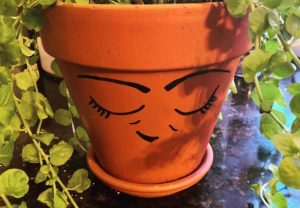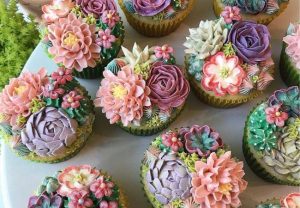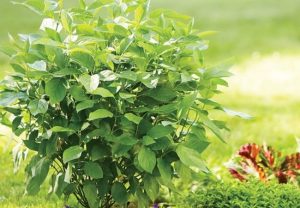Discover the ultimate guide for beginners on Hoya plant care. Learn essential tips for watering, light requirements, propagation and solving common problems to keep your Hoya thriving indoors or outdoors.
Are you new to growing Hoya plants? Don’t worry! This guide will teach you everything you need to know about caring for these beautiful plants. We’ll cover all the basics and some expert tips to help your Hoya thrive.
Here’s a chart with information about Hoya plants (Hoya spp.):
| Category | Information |
|---|---|
| Botanical Name | Hoya spp. |
| Common Name | Hoya, Wax Plant, Porcelain Flower |
| Plant Type | Evergreen perennial vine or shrub |
| Hardiness Zone | USDA Zones 10-12 (can be grown indoors in cooler zones) |
| Sun Exposure | Bright, indirect light |
| Soil Type | Well-draining, light, and airy mix |
| Watering | Moderate; allow soil to dry out between waterings |
| Growth Habit | Vining, climbing, or trailing |
| Height/Spread | Varies by species; typically 2-4 feet indoors, longer outdoors |
| Special Features | Thick, waxy leaves; fragrant, star-shaped flowers; low maintenance; suitable for indoor growing; attracts pollinators |
What is a Hoya Plant?
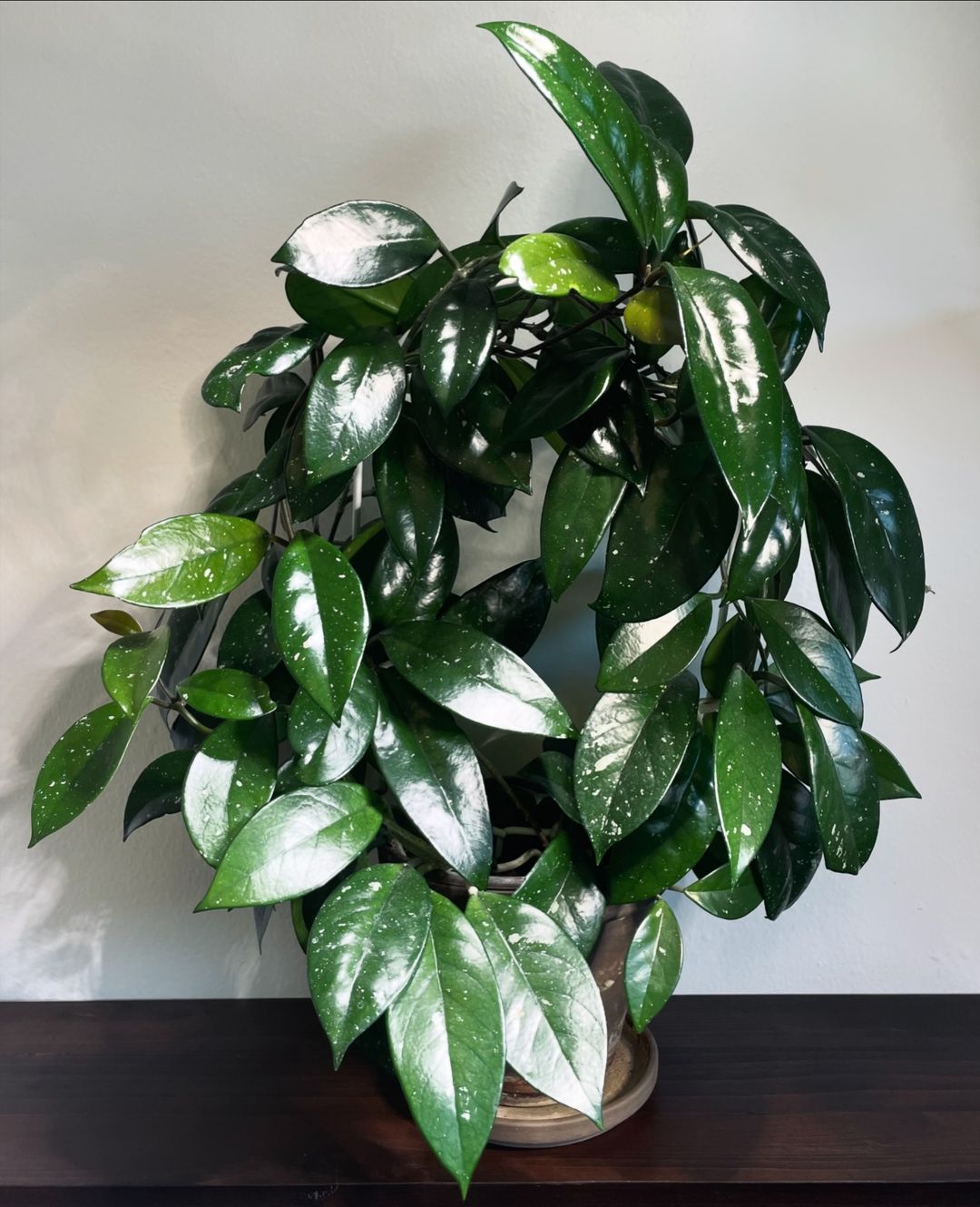
Hoya plants, also known as wax plants or porcelain flowers, are a group of flowering plants. They’re popular houseplants because they’re pretty and easy to care for. Hoyas come from tropical and subtropical parts of Asia and Australia.
There are many types of Hoyas, with different leaf shapes and colors. Some popular ones are:
- Hoya carnosa (wax plant)
- Hoya kerrii (sweetheart hoya)
- Hoya obovata (big leaf hoya)
- Hoya pubicalyx (splash hoya)
Hoyas are known for their waxy leaves and sweet-smelling flowers. They can grow as vines or hang in baskets, making them great for indoor decor.
Light Requirements
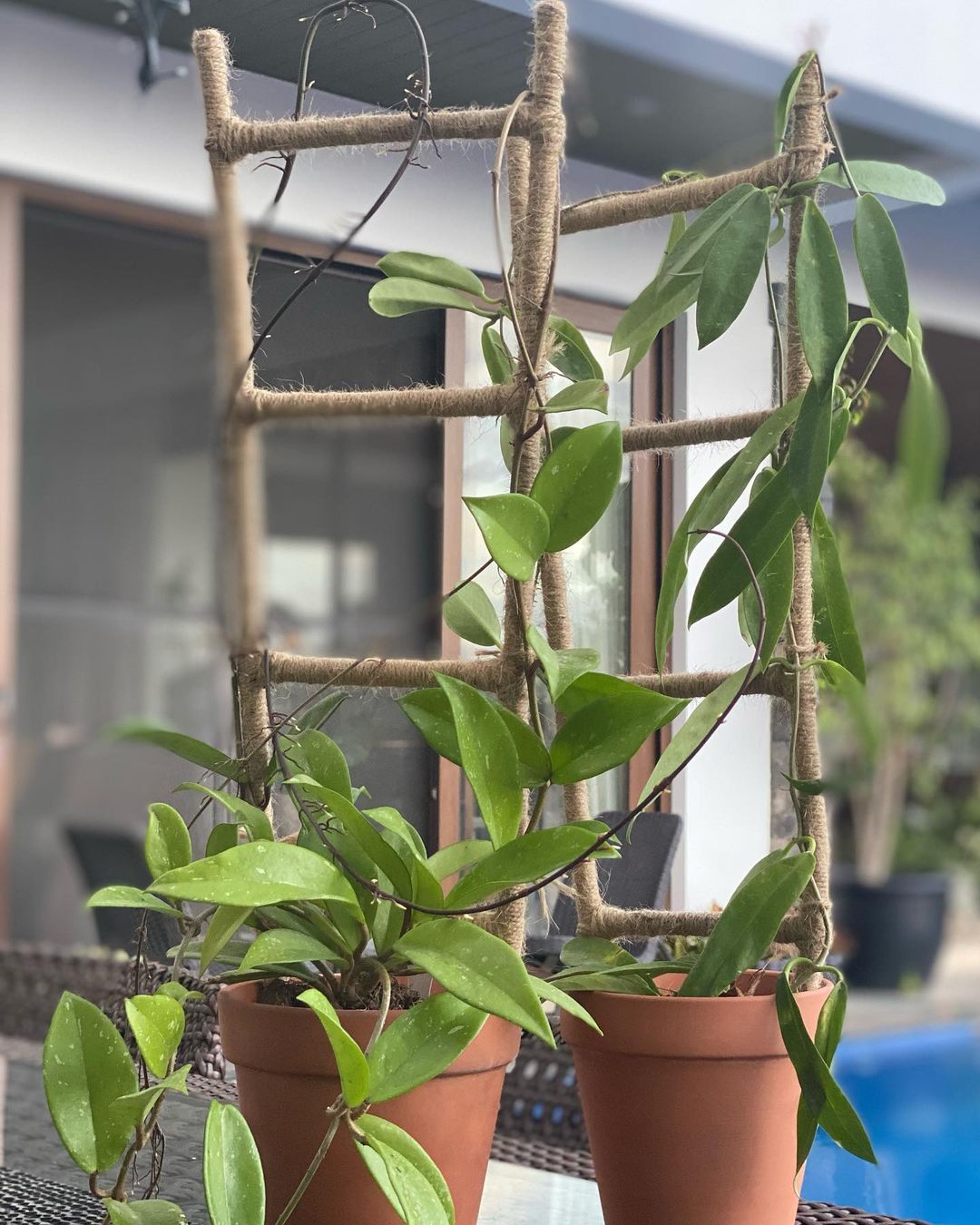
Hoyas like bright, indirect light. This means they need lots of light, but not direct sun that can burn their leaves. Here’s how to give your Hoya the right light:
- Put your Hoya near a window that gets lots of light, but use a sheer curtain to filter the sun.
- East-facing windows are great for Hoyas. They get gentle morning sun and indirect light for the rest of the day.
- If you don’t have enough natural light, you can use grow lights. LED grow lights work well and don’t use much energy.
Too little light can make your Hoya grow slowly or not flower. Too much direct sun can burn the leaves, making them turn yellow or brown.
Watering Your Hoya
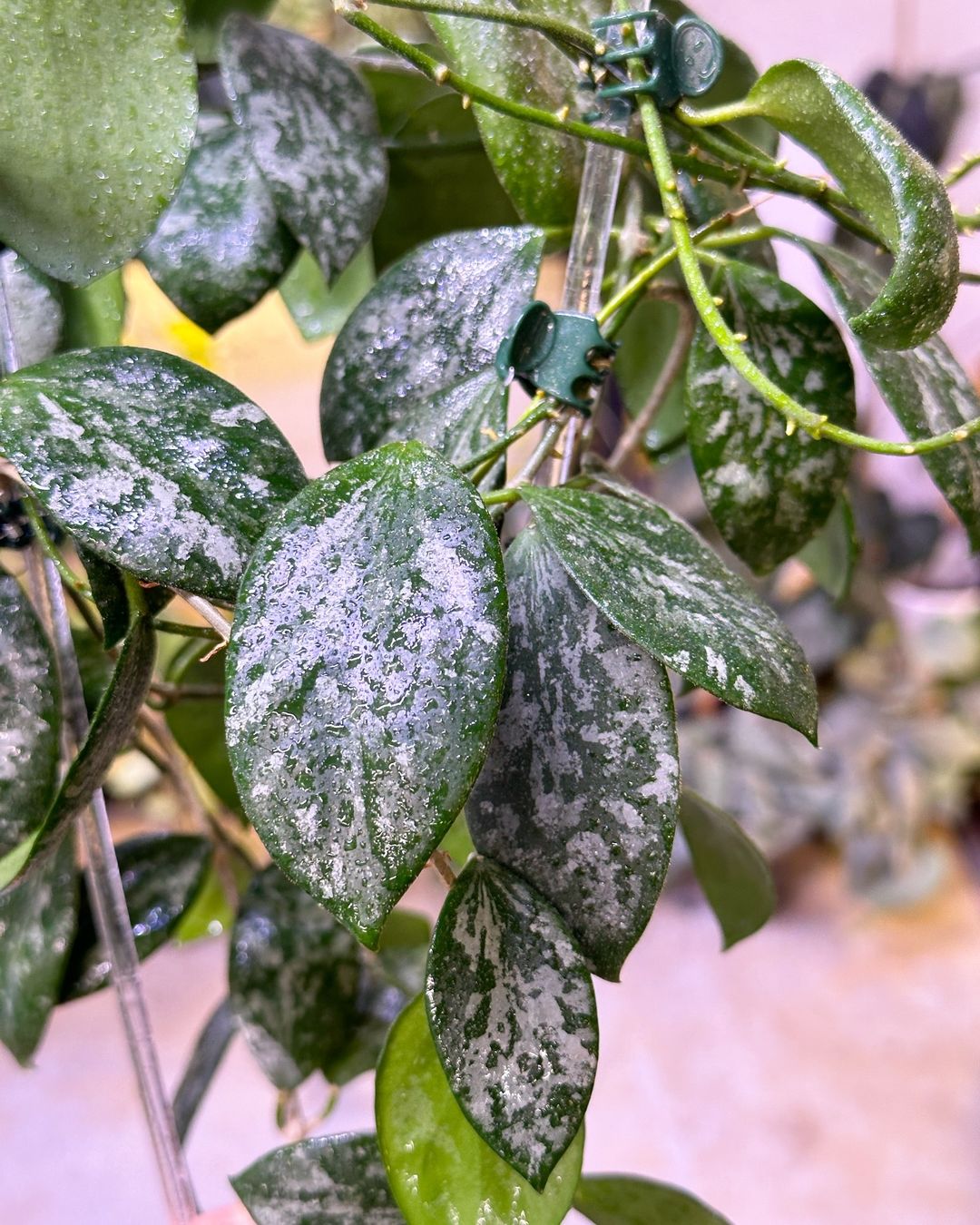
Watering is crucial for Hoya care. These plants don’t like to be too wet or too dry. Here’s how to water your Hoya right:
- Check the soil: Before watering, feel the top inch of soil. If it’s dry, it’s time to water.
- Water thoroughly: When you water, do it until water runs out of the pot’s drainage holes.
- Let it dry: Allow the soil to dry out between waterings. Hoyas don’t like wet feet!
- Adjust for seasons: Water less in winter when the plant grows slower.
Remember, it’s better to underwater than overwater. Hoyas can bounce back from being too dry, but too much water can cause root rot.
Soil and Potting
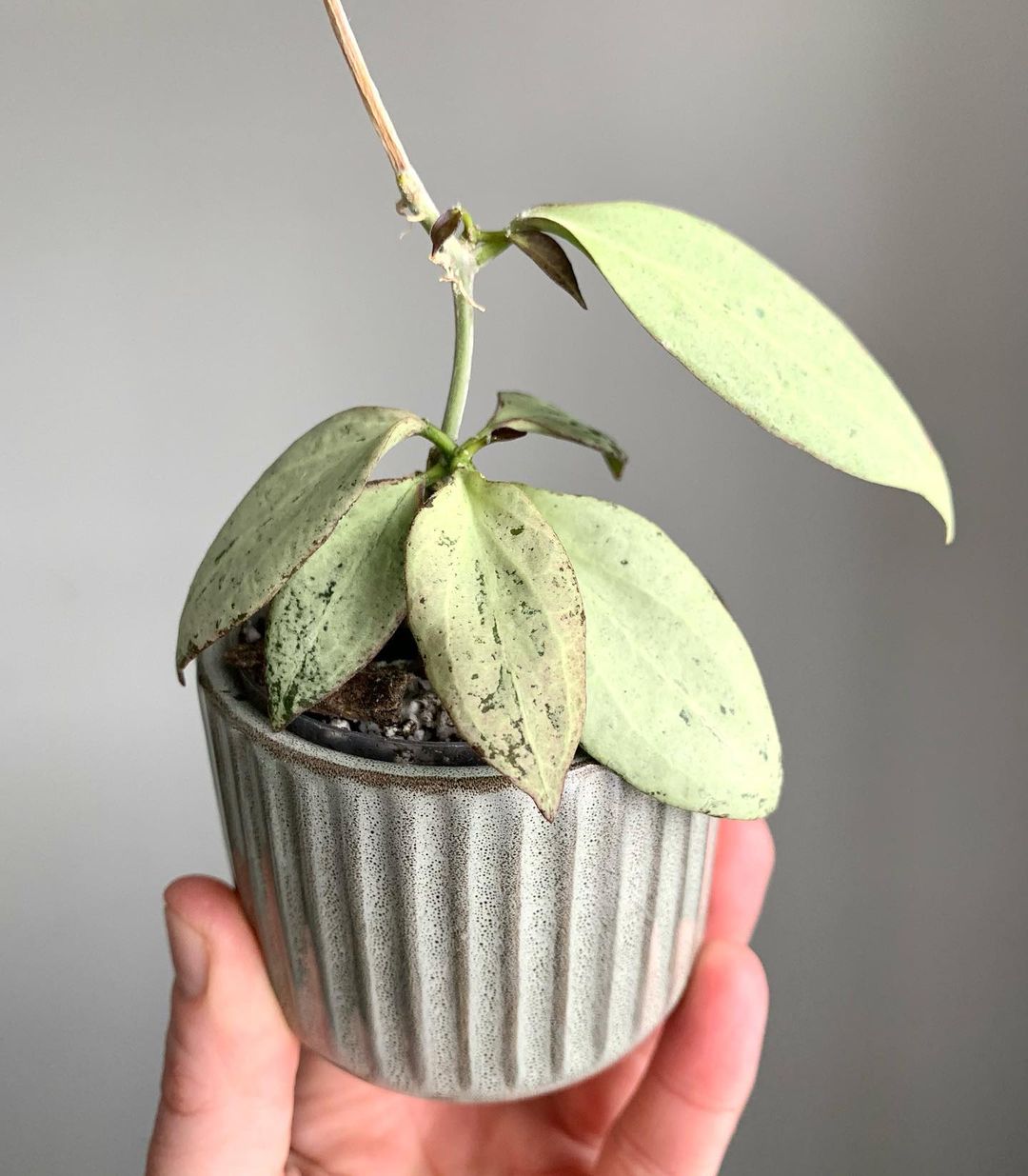
Hoyas need well-draining soil to thrive. Here’s what you need to know:
- Use a mix of potting soil, perlite, and orchid bark. This helps water drain quickly.
- You can buy pre-made epiphytic mixes, or make your own with:
- 2 parts potting soil
- 1 part perlite
- 1 part orchid bark
When potting your Hoya:
- Choose a pot with drainage holes.
- Don’t use a pot that’s too big. Hoyas like to be a bit root-bound.
- Repot every 2-3 years or when the plant outgrows its pot.
Humidity and Temperature
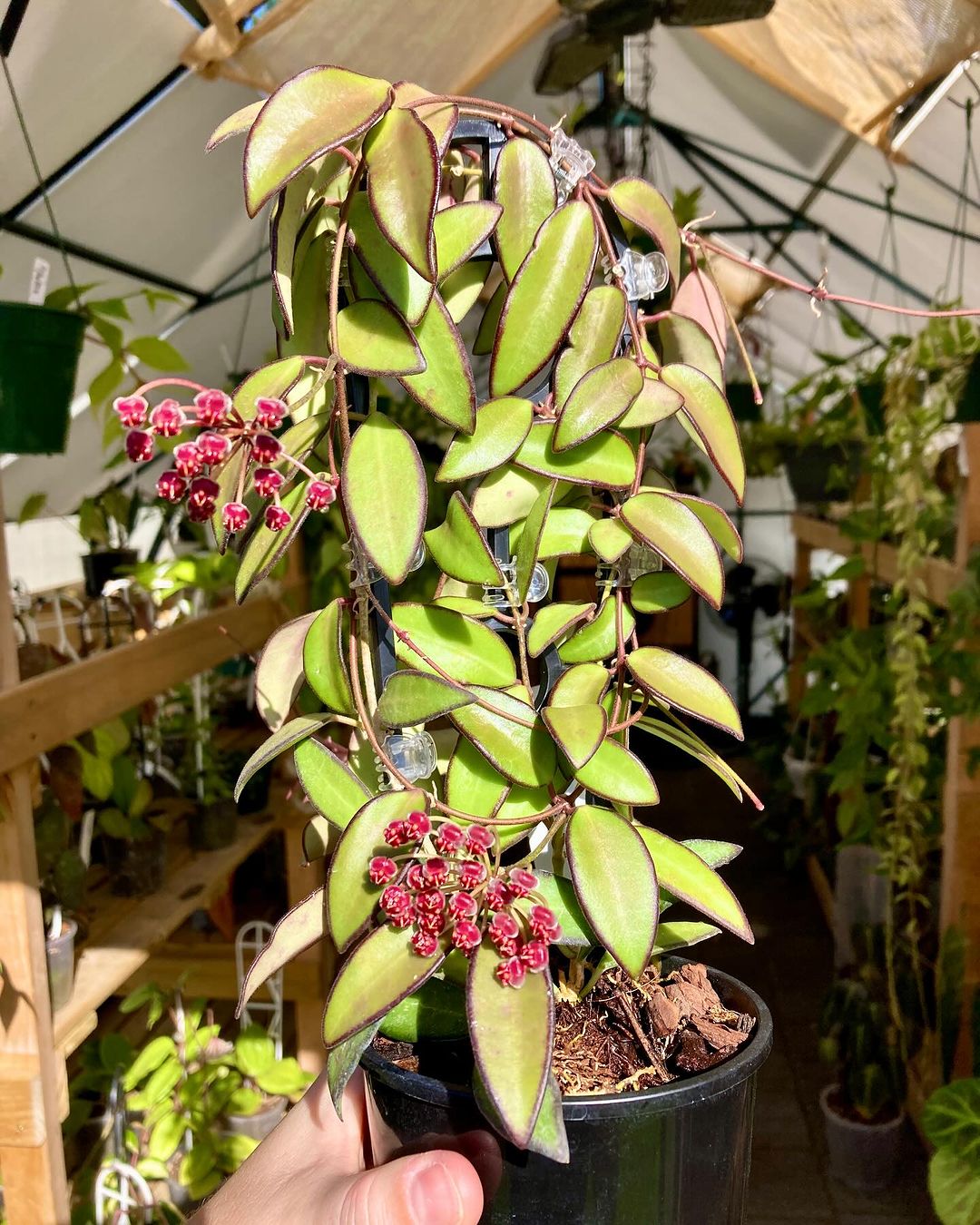
Hoyas are tropical plants, so they like it warm and humid. Here’s how to keep them happy:
Humidity:
- Aim for 60-80% humidity.
- Use a pebble tray or humidifier to increase humidity.
- Group plants together to create a humid microclimate.
Temperature:
- Keep your Hoya between 60-80°F (15-27°C).
- Avoid cold drafts and sudden temperature changes.
- Most Hoyas can handle a bit of heat, but keep them out of very hot, dry air.
If your home is dry, especially in winter, your Hoya might need extra humidity. Misting can help, but be careful not to wet the leaves too much, as this can lead to fungal problems.
Fertilizing Your Hoya
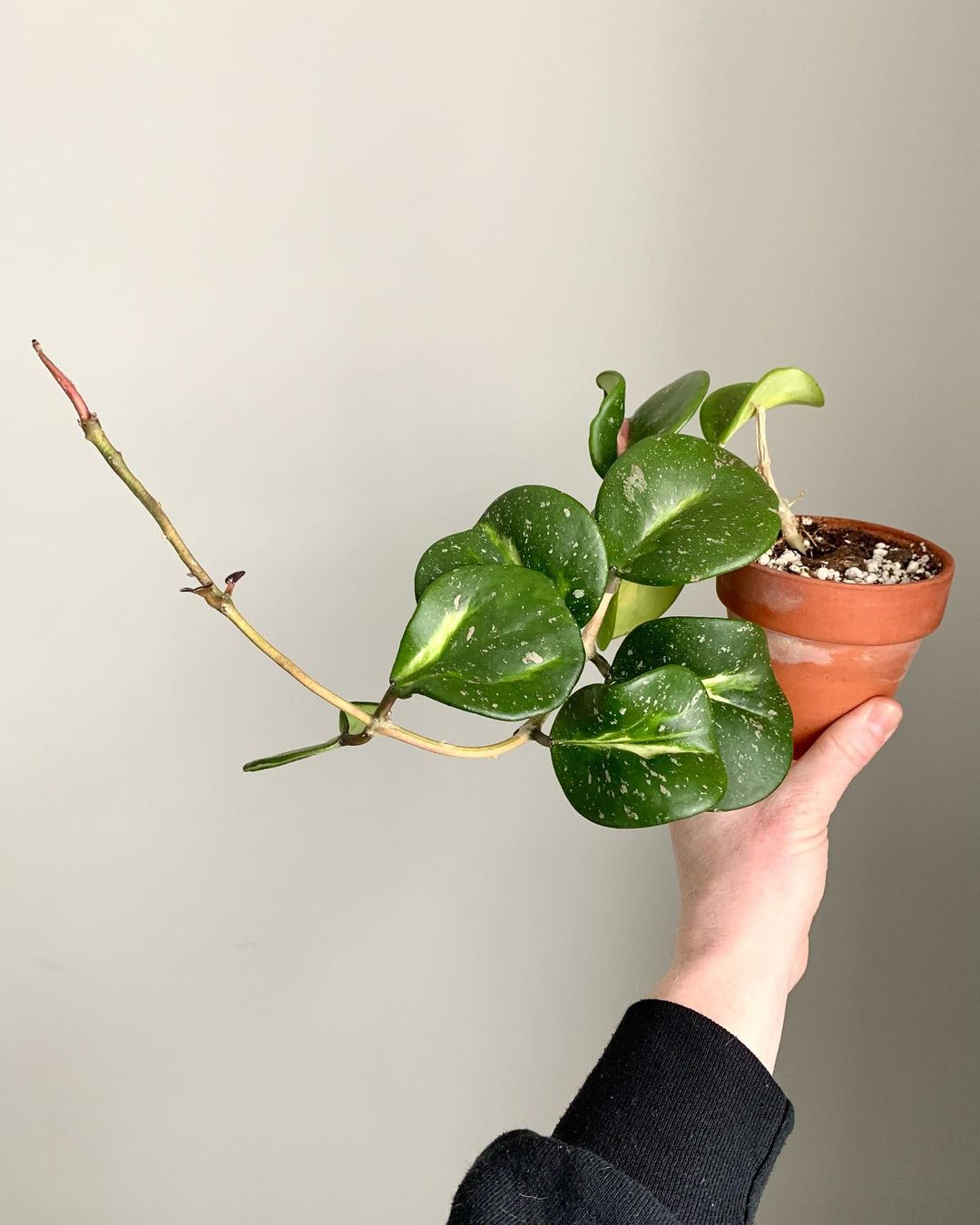
Hoyas don’t need a lot of fertilizer, but feeding them helps them grow and bloom. Here’s what to do:
- Use a balanced, water-soluble fertilizer (like 10-10-10).
- Feed your Hoya every 2-4 weeks during the growing season (spring and summer).
- Don’t fertilize in fall and winter when growth slows down.
- Always follow the instructions on the fertilizer package. It’s better to use less than too much.
Too much fertilizer can burn the roots and leaves. If you see white crust on the soil, that’s a sign of fertilizer build-up. Flush the soil with plain water to remove excess salts.
Pruning and Training
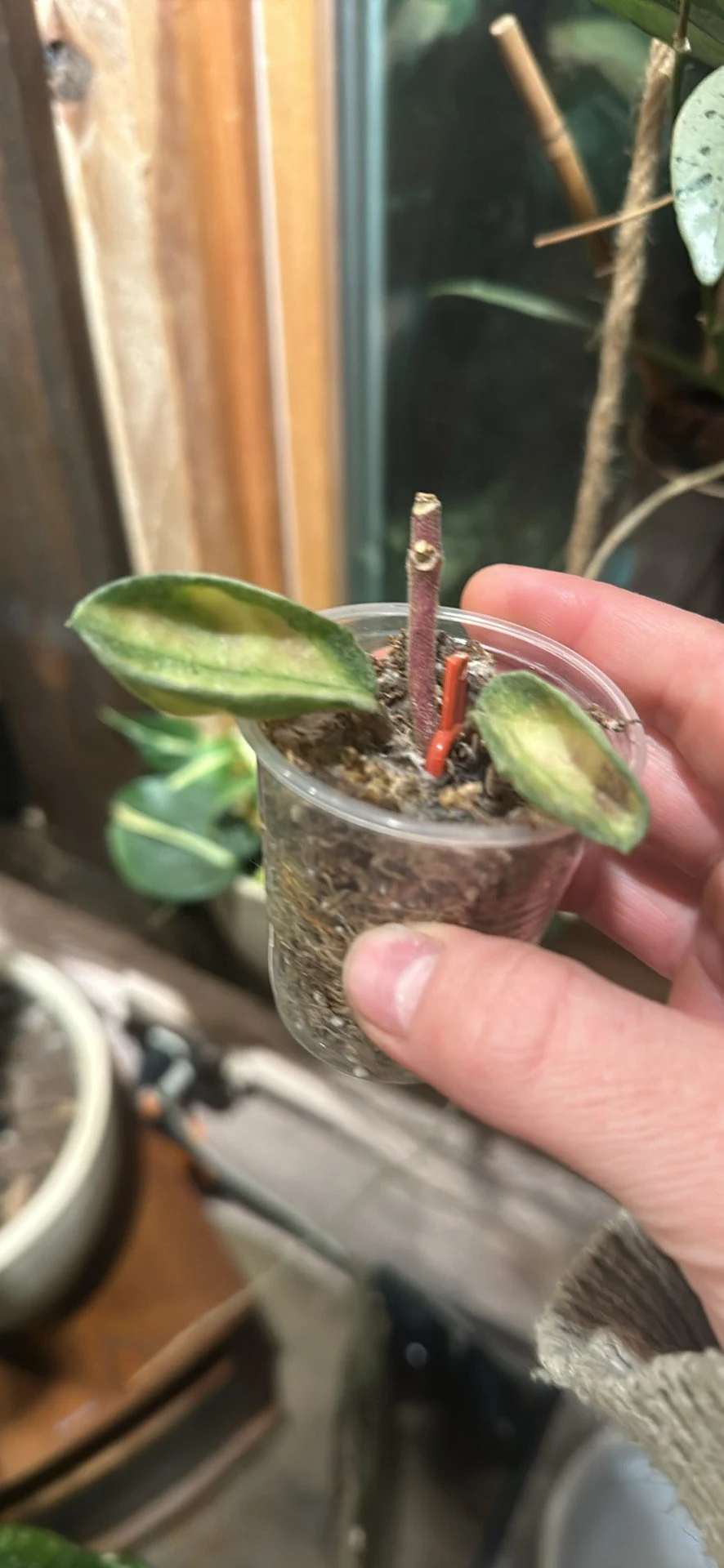
Pruning helps keep your Hoya looking neat and encourages bushier growth. Here’s how to do it:
- Use clean, sharp scissors or pruning shears.
- Cut just above a leaf node (where leaves grow from the stem).
- Remove any dead, yellowing, or damaged leaves.
- Trim long, bare vines to encourage new growth.
Be careful not to remove the spurs where flowers grow. Hoyas bloom on the same spurs year after year.
You can train your Hoya to grow on a trellis or hoop for a neat look. Gently wrap the vines around the support as they grow.
Propagation
Propagating Hoyas is easy and fun. Here’s how to do it:
- Stem cuttings:
- Cut a 4-6 inch piece of stem with 2-3 leaf nodes.
- Remove the lower leaves.
- Put the cutting in water or moist soil.
- Keep it warm and humid until roots grow.
- Leaf cuttings (for some species like Hoya kerrii):
- Cut a single leaf with a bit of stem attached.
- Plant the stem end in moist soil.
- Wait patiently – it can take months for new growth to appear!
Common Problems and Solutions
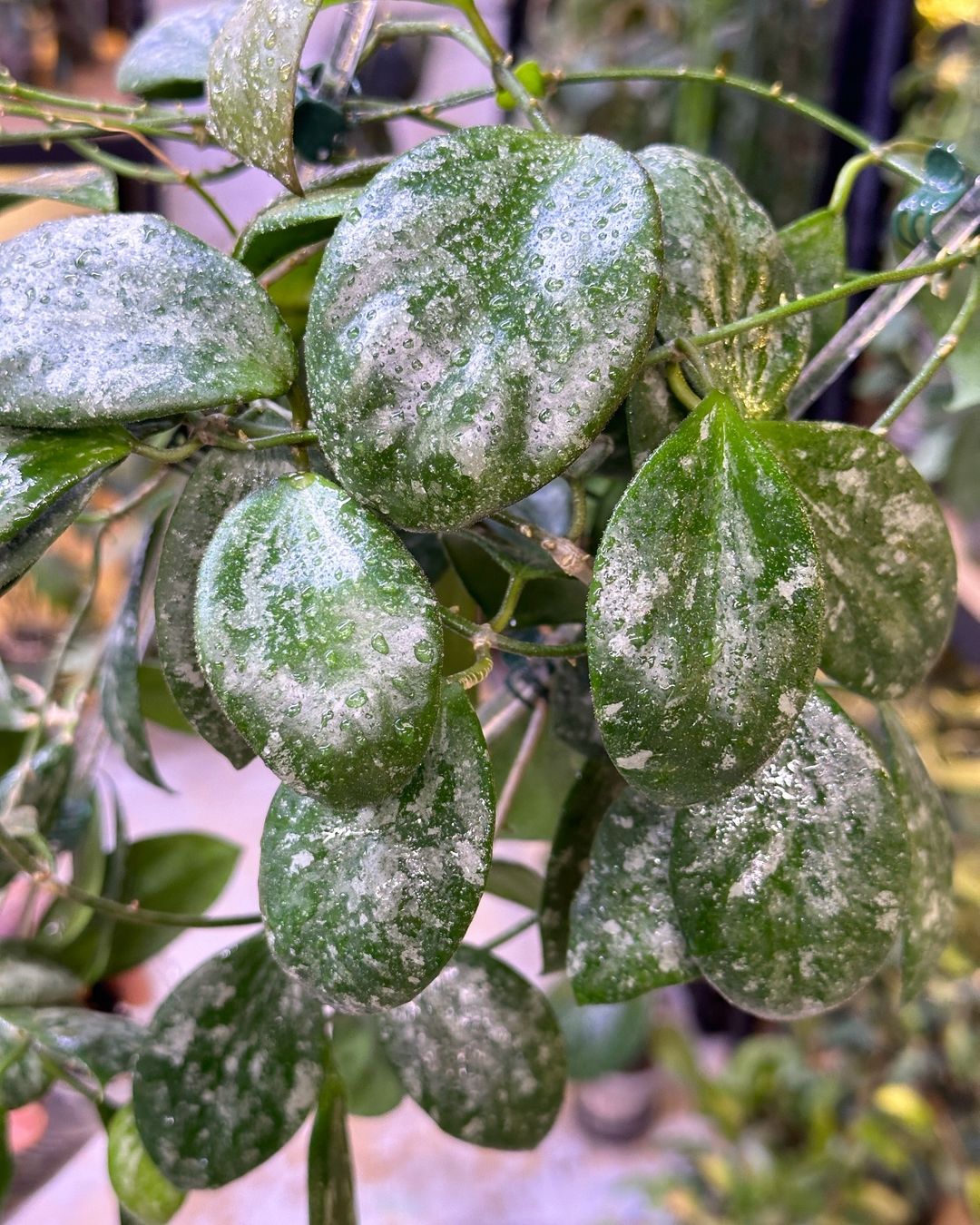
Even with good care, Hoyas can sometimes have issues. Here are some common problems and how to fix them:
- Yellow leaves:
- Cause: Overwatering, poor drainage, or nutrient deficiency.
- Solution: Check your watering habits, improve drainage, or fertilize if needed.
- Brown, crispy leaves:
- Cause: Too much direct sun or very low humidity.
- Solution: Move to a spot with less direct light and increase humidity.
- Pests:
- Common pests: Mealybugs, spider mites, scale.
- Solution: Wipe leaves with neem oil or insecticidal soap. Repeat weekly until pests are gone.
- Not flowering:
- Cause: Not enough light, wrong fertilizer, or disturbing the plant too much.
- Solution: Provide more light, use a fertilizer high in phosphorus, and avoid moving the plant once flower spurs form.
- Leggy growth:
- Cause: Not enough light.
- Solution: Move to a brighter spot or provide artificial light.
Remember, prevention is better than cure. Regular care and attention can help you spot and solve problems early.
Tips for Success
Here are some extra tips to help your Hoya thrive:
- Be patient: Hoyas grow slowly, especially when young. Don’t worry if it takes time to see new growth.
- Consistent care: Hoyas like routine. Try to water and care for them on a regular schedule.
- Watch for blooms: Once your Hoya is mature, look out for flower spurs. These will produce blooms year after year if left undisturbed.
- Clean the leaves: Wipe the leaves gently with a damp cloth to remove dust. This helps the plant photosynthesize better.
- Rotate the plant: Turn your Hoya occasionally to ensure all sides get even light.
- Support climbing varieties: Use a trellis or moss pole for climbing Hoyas to grow on.
- Enjoy the scent: Many Hoya flowers are fragrant, especially at night. Enjoy the sweet smell when your plant blooms!
Caring for a Hoya plant can be a rewarding experience. These beautiful, low-maintenance plants are perfect for beginners and experienced plant lovers alike. Remember the key points:
- Provide bright, indirect light
- Water when the top inch of soil is dry
- Use well-draining soil
- Keep humidity high
- Fertilize during the growing season
- Prune and propagate as needed
With these tips, your Hoya will thrive and maybe even reward you with its beautiful, fragrant flowers. Happy growing!
